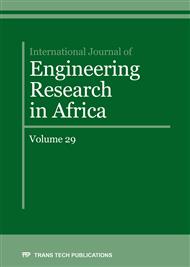[1]
Baetens, R.; Jelle, B.P.; Gustavsen, A. Properties, requirements and possibilities of smart windows for dynamic daylight and solar energy control in buildings: A state-of-the-art review,. Solar Energy Materials and Solar Cells 94 (2010) 87 - 105.
DOI: 10.1016/j.solmat.2009.08.021
Google Scholar
[2]
De Giovanni, G. Up3 Social housing per la terza età,. Aracne, Roma (2014).
Google Scholar
[3]
Faggian S., Borell E., Pavan G. Qualità di cura e qualità di vita della persona con demenza - Dalla misurazione all'intervento, FrancoAngeli, Milano (2013).
Google Scholar
[4]
Chiras, D. C., The Solar house: passive heating and cooling, Chelsea Green Publishing (2002).
Google Scholar
[5]
Avery, D. H.; Eder, D. N.; Bolte, M. A.; Hellekson, C. J.; Dunner, D. L.; Vitiello, M. V.; Prinz, P. N., Dawn simulation and bright light in the treatment of SAD: A controlled study,. Biological Psychiatry. 50 (3) (2001), 205 - 216.
DOI: 10.1016/s0006-3223(01)01200-8
Google Scholar
[6]
Murphy, M. Sick Building Syndrome and the Problem of Uncertainty: Environmental Politics, Technoscience, and Women Workers,. Kindle Edition (2006).
DOI: 10.1515/9780822387831
Google Scholar
[7]
Sloane, P.; Zimmerman, S.; Williams, C. S.; Reed, P. S.; Karminder S. Gill K. S. and Preisser J. S. Evaluating the Quality of Life of Long-Term Care Residents With Dementia,. The Gerontologist 54 (2005), 37 - 49.
DOI: 10.1093/geront/45.suppl_1.37
Google Scholar
[8]
Li, D.; Cheung, K.; Wong, S.; Lam, T. An analysis of energy-efficient light fittings and lighting controls,. Applied Energy 87 (2) Academic Search Premier, Ipswich, MA (2010) 558-567.
DOI: 10.1016/j.apenergy.2009.07.002
Google Scholar
[9]
Wanda, L. Lighten Up With Tubular Daylighting Devices. Tubular daylighting devices turn natural light into a deployable technology,. EcoBuilding Pulse. Retrieved April 3 (2014).
Google Scholar
[10]
DeBellis, K. Daylighting goes tubular,. The Construction Specifier. Retrieved August 5 (2012).
Google Scholar
[11]
Caicedo, D.; Pandharipande, A.; Willems, FMJ. Daylight-adaptive lighting control using light sensor calibration prior-information,. Energy and Buildings 73 (2014), 105 - 114.
DOI: 10.1016/j.enbuild.2014.01.022
Google Scholar
[12]
Leslie, R.P.; Raghavan, R.; Howlett, O.; and Eaton, C. The Potential of Simplified Concepts for Daylight Harvesting,. Lighting Research and Technology 37 (2005), 21-40.
DOI: 10.1191/1365782805li127oa
Google Scholar
[13]
Baird, G. The Architectural Expression of Environmental Control Systems. Spon Press New York (2001).
Google Scholar
[14]
Gutierrez, D.; Seron, F. J.; Sobreviela, E. J.; Magallon, J. A. Lighting design in low-cost immersive systems,. Proceedings of Computer Graphics International Conference, CGI (2004) 266-269.
DOI: 10.1109/cgi.2004.1309219
Google Scholar
[15]
Azens, A. & Granqvist, C. J. Electrochromic smart windows: energy efficiency and device aspects,. Solid State Electrochemistry 7 (2003) 64 - 68.
DOI: 10.1007/s10008-002-0313-4
Google Scholar
[16]
Bouvard, O.; Krammer A. and Schueler, A. In situ core-level and valence-band photoelectron spectroscopy of reactively sputtered tungsten oxide films,. Surface and Interface Analysis 48, 1 (2016).
DOI: 10.1002/sia.5927
Google Scholar
[17]
Di Salvo S., Smart Materials in Architecture,. International Journal of Engineering Research in Africa 23, Trans Tech Publications (2016) 72 - 79.
Google Scholar
[18]
Meinardi, F. et al. Large-area luminescent solar concentrators based on Stokes-shift-engineered nanocrystals in a mass-polymerized PMMA matrix,. Nature Photonics 8 (2014) 392 - 399.
DOI: 10.1038/nphoton.2014.54
Google Scholar


